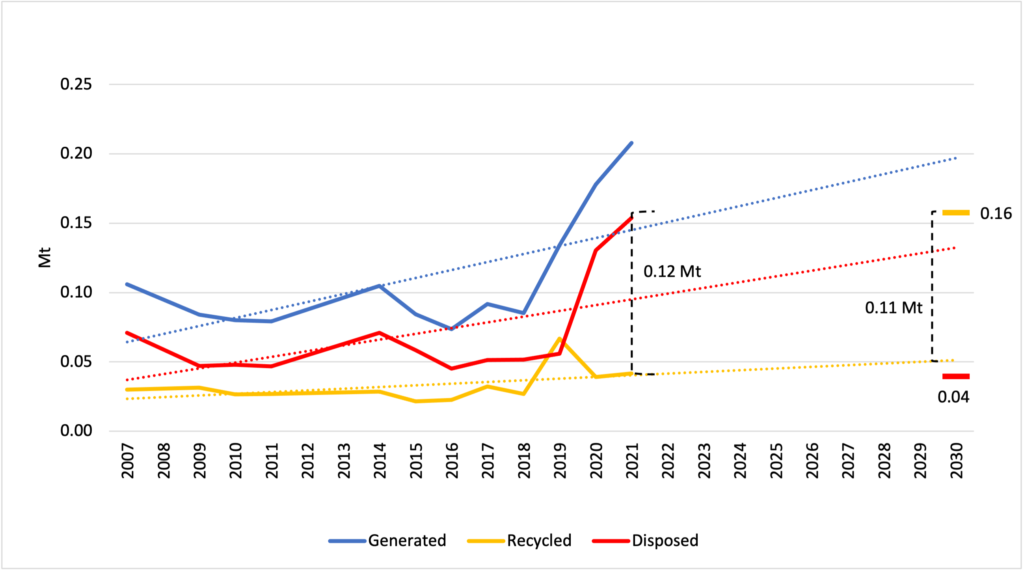Can the Northern Territory achieve the National Waste Targets?

By Mike Ritchie, Director, MRA Consulting Group
Over the last 15 years the Northern Territory has reduced its waste to landfill from 460kt/yr to 370 kt/yr (Figure 1).
So the trend is at least in the right direction. This is not true for most other States.
However, to achieve the national waste target of 80% resource recovery by 2030, the NT needs to reduce landfilling to just 80kt down from the current 370kt. That is do-able with the right economic and policy signals.

It also needs to grow recycling from 100kt/yr to about 330kt/yrand in doing so it could generate at least 50 new green jobs.
The figures below (Figures 2, 3 and 4) show that recycling rates for MSW, C&I and C&D are close to zero, in the NT.
That is because landfill is still cheap and is a local solution for waste.
Tweet
Recycling on the other hand is more expensive and generally requires transport to reprocessing facilities somewhere else. That makes recycling relatively unattractive from a cost point of view.

I have my doubts about the quality of this disaggregated data. It is pretty unlikely that domestic waste generation is falling so quickly, and I suspect it is a problem with the conversion of volume statistics to weights. Not many landfills have weighbridges in the NT.
Similarly, Figure 3 indicates a massive surge in commercial waste generation just as COVID was hitting. That is counter to the trend in all other States (where people stayed home and Commercial waste generation fell accordingly). So, I suspect the commercial data is also pretty flakey.

But even so it indicates that the NT needs to grow recycling by at least 120kt/yr to achieve the national waste targets.
Figure 4 shows the equivalent data for Construction and Demolition waste. Landfilling absolutely tracks the Generation rate because there is basically zero recycling of construction waste in the NT.
That is because landfilling is cheap and convenient.
The fact that C&D generation rates are falling is surprising. Therefore, I suspect another data problem.

Summary:
- The NT is unlikely to achieve the national waste targets;
- Recycling is flatlining near zero in the NT because landfill is cheap and convenient;
- NT population is dispersed and transport of recyclables to markets is relatively expensive;
- To achieve National Waste Targets the NT needs to focus on recycling in Darwin with:
- Introduction of a landfill levy to make recycling cost competitive and to encourage source separation and recycling of materials;
- Grants for infrastructure to separate and sort mixed waste;
- Use of national EPR schemes;
- Mandatory FOGO and commercial food recovery and recycling
- The NT needs to look closely at its data management system as the disaggregated data (MSW, C&I and C&D) shows some surprising trends that are counter to observations in most other States.
Mike Ritchie is the Managing Director at MRA Consulting Group.
This article has been published by the following media outlets:




